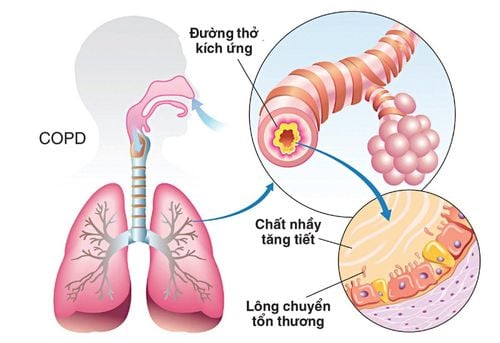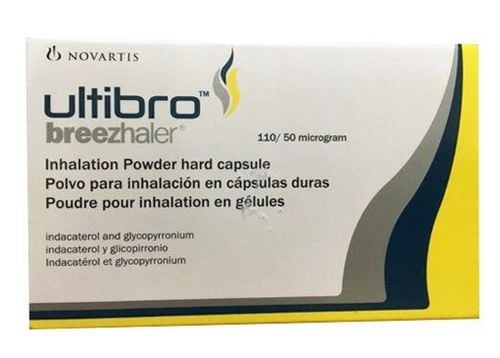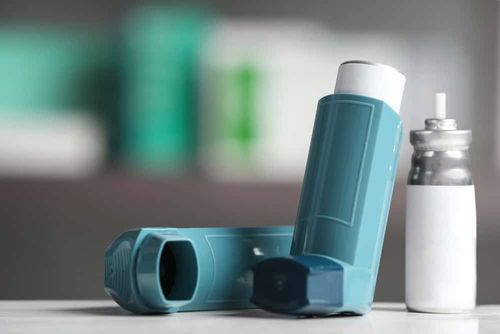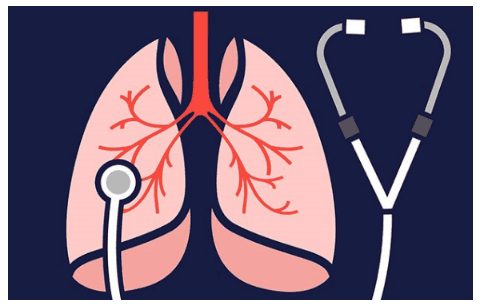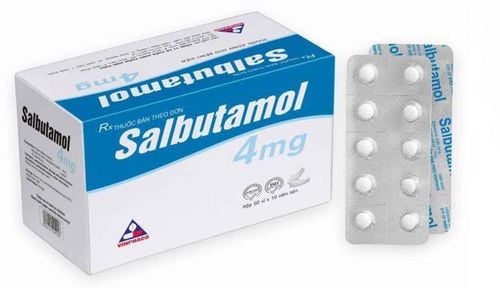This is an automatically translated article.
The article is professionally consulted by Specialist II, Senior Doctor Doan Du Dat - General Internal Medicine Doctor - Department of Medical Examination and Internal Medicine - Vinmec Ha Long International HospitalChronic obstructive pulmonary disease (COPD) is a respiratory disease that makes breathing difficult because the airways are narrower than normal. Chronic obstructive pulmonary disease can cause respiratory distress, limit the ability to function daily, and reduce quality of life. So what are the symptoms and treatment of chronic obstructive pulmonary disease?
Epidemiology of Chronic Obstructive Pulmonary Disease (COPD); The disease is common in adults, the rate increases with age and is very rare in children.
In the US, approximately 24 million people have airflow limitation, of which about 12 million have a diagnosis of COPD. COPD is the third leading cause of death, resulting in 135,000 deaths in 2010 – compared with 52,193 deaths in 1980. Between 1980 and 2000, the COPD death rate increased by 64% (from 40 .7 to 66.9/100,000) and has remained flat ever since. Incidence, incidence and mortality increase with age. Prevalence is higher in women, but total mortality is similar in both sexes. COPD appears to be familial due to alpha-1 antitrypsin deficiency (alpha-1 antiprotease inhibitor deficiency).
COPD is on the rise worldwide due to the increase in smoking in developing countries, the decrease in mortality from infectious diseases, and the widespread use of biofuels such as wood, grass or other materials. other organic materials. COPD deaths may also affect developing countries more than developed countries. COPD affects 64 million people and caused more than 3 million deaths worldwide in 2005 and is expected to become the 3rd leading cause of death globally by 2030.
1. Causes of Chronic Obstructive Pulmonary Disease
Damage or blockage in the lung tissues causes chronic obstructive pulmonary disease. These injuries occur when you regularly inhale harmful irritants for long periods of time. And anyone is at risk of contracting the disease, including children or adults. In particular, irritants are potential causes of chronic obstructive pulmonary disease, such as:
Smoking, long-term exposure to second-hand smoke causes a high risk of 80-90% of chronic obstructive pulmonary disease. Chemical smoke. Dust. Outdoor pollution. Indoor air pollution such as inhaling fuel gas. Occupational, chemical. Lower respiratory tract infections are frequent, especially in young children. It can be said that smoking or passive smoking is the biggest cause of disease. Along with the potential causes of the disease above, the following combined factors that increase the likelihood of chronic obstructive pulmonary disease are people aged 65-74 years, with a history of asthma or other respiratory diseases: , people with a history of smoking or breathing a lot of smoke in the past, people with family members suffering from this disease,... These subjects need to avoid getting the disease as soon as possible.

Hút thuốc, hít phải khói thuốc lâu dài gây nguy cơ cao 80-90% mắc bệnh phổi tắc nghẽn mãn tính.
2. Symptoms of chronic obstructive pulmonary disease
Chronic obstructive pulmonary disease causes direct effects and signs in the respiratory system, namely:
Chronic, persistent cough. Cough with sputum, sputum is white, gray-yellow, green, sometimes even bloody sputum can be seen. Having respiratory infections and recurring colds and flu. Shortness of breath, shortness of breath, shortness of breath. Chest feels tight and painful. Wheezing, prolonged fatigue. Mild fever and chills. These are the initial symptoms that will be encountered in both children and adults with chronic obstructive pulmonary disease. These signs are often subjective by the patient, so there is no definitive examination and treatment orientation. People with chronic obstructive pulmonary disease need to be treated at the hospital as soon as they see severe symptoms such as:
Shortness of breath that makes it impossible to talk. The patient's fingernails, legs or lips turn blue, gray - this indicates low oxygen levels in the blood. There is a state of falling into a state of lethargy. Fast heart rate, very fast. Symptoms in the early stages mentioned above are getting worse, despite previous treatment
3. Complications of chronic obstructive pulmonary disease
Chronic obstructive pulmonary disease, if not treated early and definitively, will cause many extremely dangerous complications. In it, specialists said, some complications include:Heart diseases: When in the severe stage, people with chronic obstructive pulmonary disease will have a rapid heart rate, causing cardiac arrhythmias, leading to heart failure. to heart failure (also known as congestive heart failure). High blood pressure: Chronic obstructive pulmonary disease can cause high pressure in the vessels that carry blood to the lungs, causing pulmonary hypertension, an increase in blood pressure. Respiratory infections: People will have symptoms of frequent colds, flu or severe pneumonia that cannot be cured.
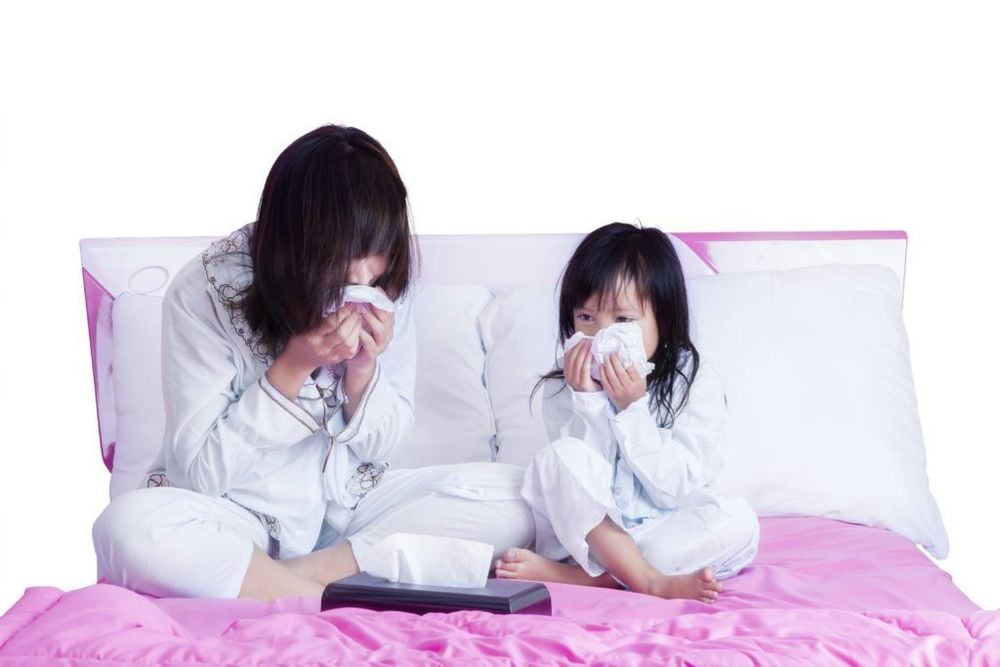
Nhiễm trùng hô hấp là một trong những biến chứng của bệnh phổi tắc nghẽn mãn tính.
4. How to cure chronic obstructive pulmonary disease
When you start to see the above symptoms, whether in children or adults, you need to see a doctor as soon as possible to get an accurate diagnosis of your health condition. At the hospital, the patient will be carried out tests, paraclinical diagnoses, ... to give the most accurate diagnosis. Specifically, the patient will perform lung function tests, spirometry, chest X-ray or CT scan, arterial blood gases for the doctor to have accurate conclusions.
Chronic obstructive pulmonary disease cannot be completely cured, but there are many methods to treat and prevent the disease from developing effectively. For chronic obstructive pulmonary disease, the specialist will aim to reduce the symptoms of the disease, reverse, slow the progression of the disease, improve exercise, and prevent and treat complications.
With the current treatment methods are being commonly applied such as:
Use of drugs: bronchodilators, expectorants to help patients breathe easier, bronchodilators to reduce pneumonia, improve symptoms . Preventive vaccines: Patients use flu vaccines, pneumococcal vaccines, oxygen therapy. Surgery: As a last resort for patients with chronic obstructive pulmonary disease for which medication has not been effective, typically a lung transplant.
5. Advice for patients with chronic obstructive pulmonary disease
Patients with chronic obstructive pulmonary disease need to see a specialist as soon as they detect the signs of the disease mentioned above, for examination and correct treatment orientation. Use medication as directed by your doctor, have regular health check-ups to screen and detect disease at the earliest. Quit smoking, pipe tobacco; For children, it is necessary to avoid inhaling secondhand smoke, keep the living environment clean, and limit exposure to irritating fumes and gases. Exercise, eat nutritious food. You need a flu shot every year, every 5 years a pneumococcal shot. When chronic obstructive pulmonary disease is severe, it is necessary to immediately visit a specialist for timely treatment. Practice breathing every day in a cool place to avoid getting cold. COPD is a chronic disease, patients need to have regular monthly medical check-ups to monitor the condition of the disease. If you don't go to the doctor regularly, it can be life-threatening if you don't go to the doctor regularly. When you see signs of increased shortness of breath, or fever, you should immediately go to medical facilities for medical examination.
Vinmec International General Hospital is the address for examination, prevention and treatment of many respiratory diseases, including chronic obstructive pulmonary disease. The examination, diagnosis and treatment of diseases are carried out by qualified and well-trained doctors along with modern medical equipment, which will bring optimal treatment results to patients.
In order to improve service quality as well as serve the requirements of comprehensive health care, Vinmec now also deploys convenient medical services such as a lung cancer screening package, which is especially useful for those patients who regularly smoke and are exposed to tobacco or have a history of chronic obstructive pulmonary disease and many other respiratory diseases.
Please dial HOTLINE for more information or register for an appointment HERE. Download MyVinmec app to make appointments faster and to manage your bookings easily.




